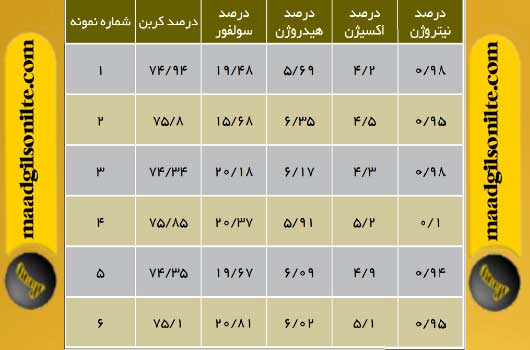
Definition of bituminous:
Bitumen is a general term for a group of hydrocarbons that are flammable and dissolve in cs2.
Bitumens include groups of asphalt, asphaltoid, mineral waxes and so on.Almost all important oil regions of the world have been discovered by the presence of natural bitumen on the earth’s surface.
Masjed Soleyman oil field is one of these fields. Today, this exploratory factor for oil is one of the most primitive exploration methods, as it has been replaced by much more reliable methods and equipment.But on the other hand, new applications (industrial uses) for bitumen have emerged that have been unknown for decades, and therefore again, the discovery of this material is of relative importance.
The first human use of bitumen as a building material was recorded around 7 BC. One way to use bitumen is to mix it with sand and organic matter, which in the construction of streams and foundations, as Mortar was used between rows of stone or brick.
Distribution of natural bitumen in Iran:
Bitumens are present in most oil-rich parts of Iran. Research has been carried out by the Geological Survey in some parts of Kuhdasht region in Lorestan province, West Gilan and Qasr Shirin in Kermanshah and Ilam provinces.
Studies on bituminous indices have been carried out in the area of Gilan-e-Gharb, Kuhdasht and Mamolan, and in the area of Davood Aligudarz Imamzadeh, geochemical evaluation of bitumens in this area has been done.Note: The analyzed bitumens are not from Gilan Gharb region and have been prepared in Lorestan region.
1- Work method and research
To evaluate the geology and geochemistry of bitumen, first field studies were conducted to study lithology and identify the outgrowths of natural bitumen in the study area and then ٦ samples of these natural bitumens to analyze physical and chemical properties such as ash percentage, moisture content, percentage Volatiles, percentage of carbon, oxygen, nitrogen and sulfur and XRF geochemical tests were sent to the laboratory.
The results of these analyzes (woodpeckers) are presented in the tables inside this page of Gilsonite Mad mine.Note: This is not an analysis of Gilsonite mines in West Gilan region.
According to physical and chemical analyzes on bitumen samples, the following parameters have been investigated:
1 – Carbon: All samples tested have a significant percentage of carbon. The maximum amount of carbon related to sample 4 in the table is 70.7% and the lowest amount is related to sample-1 at 24.4%. Therefore, the studied natural bitumens are of very good quality.
2 – Oxygen: Natural bitumens have a lot of oxygen is uncoverable, bituminous coals with low oxygen are highly curable and in dry air, absorb about 1 to 2 percent moisture.
The maximum amount of oxygen is related to sample 4 by 2.5% and the lowest is related to sample 1 by 2.2%.
3 – Percent solubility in different materials: Percent solubility of CS2, benzene, methanol and ethanol samples were measured.
The percentage of volatiles in bituminous samples is calculated from the total percentage of solubility in these four materials.CS2, benzene, methanol and ethanol tests were performed for 24 hours to determine the solubility percentage, at a ratio of 10 g per 100 cm3.
Due to the very low percentage of oxygen and very low solubility in CS2, these natural bitumens are classified as asphalt pyrobitomines and in a more precise classification, are called asphalt pyrobitomines of the type Albert or Altrit.
4 – Moisture content: The lower the moisture content of bitumen samples, the more desirable the quality of bitumen. The moisture content of bitumen samples in the study area varies from 1.5% to 0.2%.
5 – Specific gravity: The presence of impurities in bituminous samples increases the specific gravity and reduces their quality. See the specific gravity of the studied samples in the table.
6. Amount of mineral ash:
The amount of mine ash of bituminous samples taken from the study area was measured for 3 hours at a temperature of 800 ° C.
The lower the amount of natural bitumen ash, the higher the quality of the bitumen. The minimum amount of ash is related to samples -1 and 6 by 8.5% and the maximum is related to sample -1 by 8.5%.
XRF (XRF fluorescence analysis) performed on bituminous samples shows that the percentage of most of the metallic elements in the samples is very low.
But to get a good, pure mineral for export, you have to lower that small percentage of impurities as well. In the studied samples, the levels of Si and Ca are high. The average amount of Si is about 0.6% and Ca is about 2.7%.

